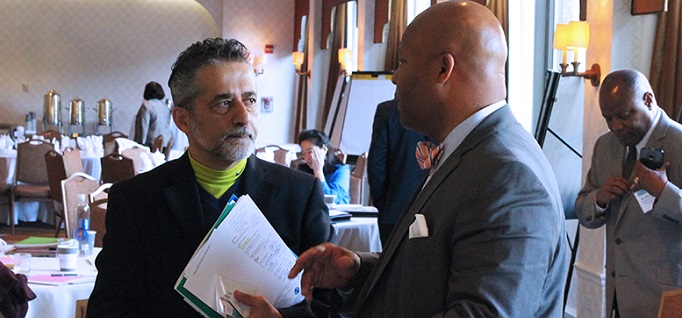Weaving equity, diversity into the mission
By Matthew Dembicki
October 31, 2018
College presidents discuss equity and inclusion.
Rassoul Dastmozd, president of St. Paul College in Minnesota, seeks to be a “connector in the community.”
“I have to be able to connect the dots and advocate for the college,” he said. That covers a wide range, from working with local employers who will potentially hire his students, to partnering with four-year institutions to ease the transition for his students who plan to transfer.
That may seem like something on most community college presidents’ to-do list, but it’s especially important when trying to ensure equity and inclusion — and especially at a college like St. Paul, which serves mostly first-generation and diverse students.
“Often, students of color don’t have the connections,” said Dastmozd, who immigrated to the U.S. from Iran in 1979. “Just because they get a degree doesn’t mean they get a job.”
Dastmozd was among the speakers at the Equity and Inclusion STEM Thought Leaders’ Summit in Washington, D.C., which is part of the annual Advanced Technological Education Principal Investigators Conference this week. The American Association of Community Colleges is hosting the summit and conference, in partnership with the National Science Foundation.
Changes on campus, too
Dastmozd, who participated in a panel discussion on student engagement and success, said it’s important to make visible changes on campuses, too. Two years ago, in addition to personally interviewing all job finalists, he modified the college’s hiring process to require applicants to submit an equity/inclusion philosophy statement.
“Often times, that is the tie-breaker,” he said.
Since 2011, diversity among staff at St. Paul College has grown from 15 percent to 28 percent, he added.
Dastmozd and other panelists said faculty should reflect the students they teach. If an applicant doesn’t reflect the students, Dastmozd looks for other elements that show they have experiences in a diverse community. That can include working for the Peace Corps, studying abroad and more.
Into the community
Michael Torrence, president of Motlow State Community College in Tennessee, said he goes out into the community, particularly K-12 schools.
“It’s important that they see us,” he said.
Heather Belmont, vice president of academic affairs at Indian River State College in Florida, added that college administrators can volunteer to serve on school board advisory committees and in other capacities to plug into the schools that will eventually send their students to local colleges.
Dastmozd noted that some community college faculty work with high school teachers, typically through dual enrollment or similar programs. The teachers often bond, and the high school teacher can become a two-year college advocate, which is a great way for students and families to learn about what community colleges can offer.
“There are many ways you can build these bridges,” Belmont noted.
There’s more to the story! Read the full article in CC Daily.



